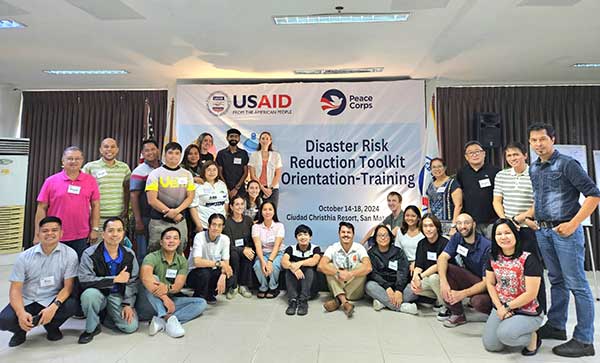The United States Peace Corps, with support from the U.S. Agency for International Development (USAID), recently launched the Disaster Risk Reduction (DRR) Toolkit, a comprehensive training guide aimed at helping Peace Corps volunteers and partner communities enhance disaster preparedness.
The DRR Toolkit includes resources for developing disaster preparedness strategies, conducting risk assessments, managing community resources, and strengthening early warning systems. As an inclusive training guide, it promotes the active participation of all community members in pre-disaster planning.
From Oct. 14 to 18, the Peace Corps gathered 28 volunteers, staff, and work partners from Philippine government agencies and non-government institutions for an orientation training based on the DRR Toolkit in San Mateo, Rizal. Funded by USAID, the program deepened collaboration and knowledge exchange between the Peace Corps and its work partners, further strengthening disaster preparedness programs in local communities.
“The DRR Toolkit is a vital resource for helping communities build resilience and reduce the impact of disasters and extreme weather events,” said Peace Corps Philippines Country Director Marguerite Roy.
“The toolkit is very inclusive and can be easily integrated into participatory planning and mentoring activities in communities,” said Engineer Raoul Cam of the Ormoc City Planning and Development Office. “I will be glad to endorse the toolkit to my colleagues in the local government unit and to partners in other sectors involved in DRR advocacy.”
To help participants observe DRR practices in action, they visited the Philippine Atmospheric, Geophysical and Astronomical Services Administration (PAGASA) office and the Marikina City Disaster Risk Reduction and Management Office.
Since its establishment in 1961, more than 9,300 Peace Corps volunteers have served alongside host communities across the Philippines, addressing the country’s most pressing development priorities, including disaster preparedness for vulnerable communities.




























